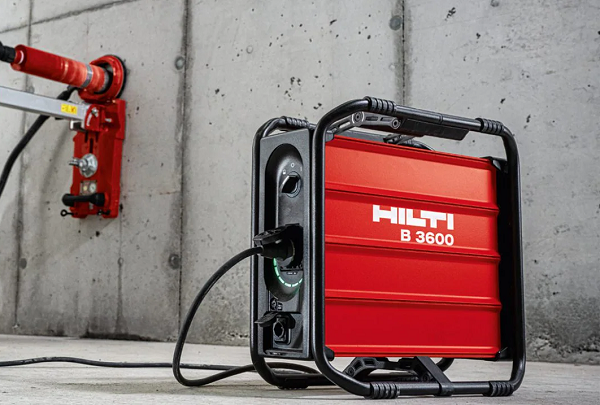Did they really patent this use case? – IP strategy for fleet management – digital transformation at Hilti
Hilti’s leap from being a seller of equipment to becoming a provider of complete B2B solutions goes beyond additional services and traditional after sales support or spare parts supply: it is called fleet management. The fleet management idea at Hilti is retrieved from the automotive industry and comes as a one-stop package. Customers, and especially economically-aware business customers, appreciate a one-stop service which is adapted to their individual needs and optimizes their own productivity. As response, they are prepared to pay a significantly higher price.
Hilti’s Fleet Management strategy means that the company is no longer selling drills but holes. This business model targets at establishing a long-term maintenance system with leasing contracts, and to enable long-term, sustainable, and stable customer relationships. Having adopted a market-oriented IP culture and having adapted its IP management to its business model, the company now benefits from the protection of its business model through the use of IP. How this industry case study was done can be learned in the MIPLM (CEIPI Master for Intellectual Property Law and Management) case study Hilti: “Business model transformation to adapt to the digitalization in the construction industry”. Available to download: MIPLM_Industry_Case_Study_Hilti.pdf
For a better overview of the implementation of fleet management with its multiple aspects and use cases, such as predictive maintenance, inventory management, exchange of broken tools etc. please also watch the case study video.
Cannnot open the video? Please click: https://youtu.be/at0oNpdF6G8
Questions:
1 . Which use case of Hilti’s fleet management is protected against imitation by the following patent?
-
- Group 1: EP2213421B1 “Pneumatic striking mechanism and control method”
- Group 2 and 3: EP3426441B1 “Handheld machine tool and amplifier antenna”
- Group 4: EP2931482B1 “Method for operating a hand-held working device”
- Group 5: EP2107718B1 “Method for configuring the electronic equipment of a handheld implement”
2 . Can you find other patents of Hilti in your own search that can be assigned to this use case?
3 . Which further protection instruments would you consider useful for this use case?
4 . How could the use case be expanded to include another element that is desirable for the customer and that could be made exclusive through IP rights?
Group 1:
Anita Yaryna, Branimir Puškarić, Claire Laurens de Lopez, Greta Žėkienė, Steffen Rutter, Terita Kalloo
Cannot open the video? Please click: https://youtu.be/4p1MOEkmNO0
Group 2:
Véronique Bolinches, Mohsen Ahmadi, Peter Conlon, Konstantinos Kontogiannis, Nina Šlat, Shu-Pei Oei
Cannot open the video? Please click: https://youtu.be/OmdCi4boBOM
Group 3:
Rita Labundy, Andreas Werner, Sinara Travisani Cardozo, Clement Lim, Sachin Seshadri
Cannot open the video? Please click: https://youtu.be/G2NWNzV-njE
Group 4:
Merve Şimşek, Nora Rüter, Yanan Huang, Anders Isaksson, Johannes Holzmair
Cannot open the video? Please cllick: https://youtu.be/LnmjTG_89t8
Group 5:
Maria Boicova-Wynants, Felipe Bustos, Andrea Foglia, Timofey Rubchenko, Ricardo Cali
Cannot open the video? Please click: https://youtu.be/4iLQ-qYw1Es
Thanks to the coauthors from Hilti Stefan Nöken and Oliver Söllner, and thanks to Centre d’Etudes Internationales de la Propriété Intellectuelle – CEIPI If you want to learn more: Follow us at IP Business Academy



